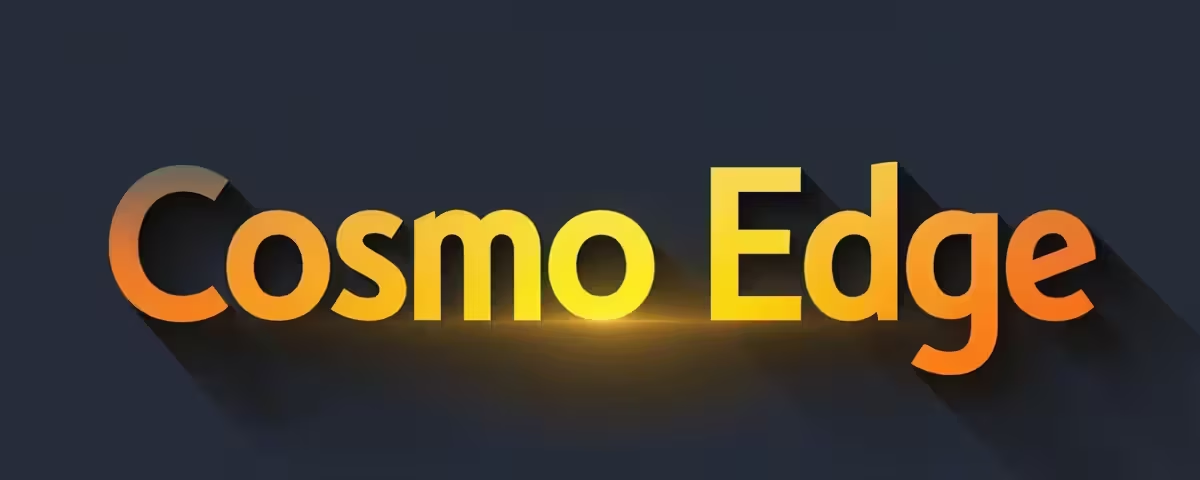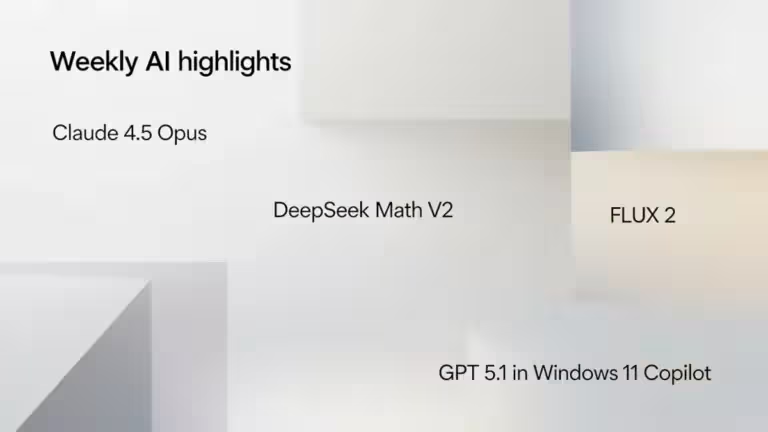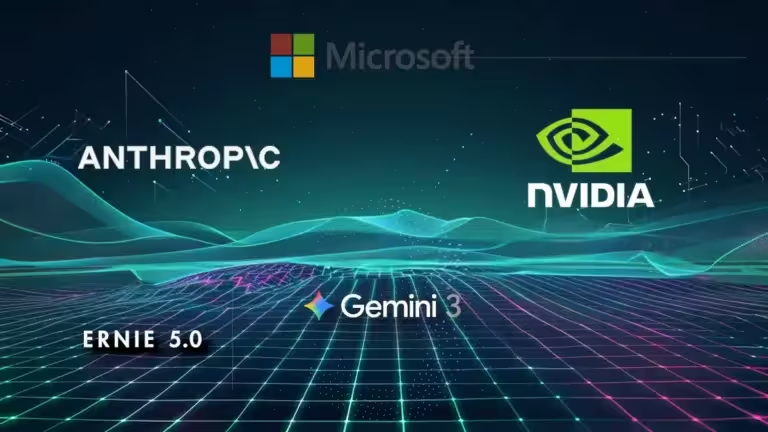Complete Guide: How to Choose Your Media Monitoring and Curation Tool in 2025

In a world where information travels at lightning speed, choosing an effective media monitoring tool has become essential in 2025. Whether it is a company anticipating market trends, a journalist chasing breaking news, or a freelancer filtering endless content flows, everyone needs a reliable information monitoring solution adapted to their needs.
But should you opt for a paid media monitoring platform, a free solution, or an open source alternative? In this complete guide, we help you define your selection criteria and identify the media monitoring tool that best matches your profile and budget.
What is a media monitoring and content curation tool?
A media monitoring tool is designed to track, collect, and analyze information from multiple sources such as websites, blogs, social media, online press, or specialized databases. The objective is to quickly detect weak signals, follow sector news, and anticipate trends. Information monitoring (also called competitive intelligence or strategic monitoring) turns raw data flows into actionable insights that can guide business decisions.
A content curation tool, on the other hand, focuses on selecting and highlighting relevant content. It is not only about tracking but also filtering, enriching, and sharing insights with a targeted audience. Curation platforms like Scoop.it allow users to create thematic pages gathering the most interesting articles while adding personal commentary.
By 2025, the line between monitoring and curation has blurred. A strong media monitoring system combines surveillance, organization, and sharing to turn overwhelming data streams into directly usable knowledge.
Why use a media monitoring and curation tool in 2025?
The volume of information produced every day is staggering. Without a media monitoring and curation tool, it quickly becomes impossible to separate what matters from what does not. These solutions help you save time by automating the search and filtering of relevant content.
Another major benefit is reactivity. Real-time alerts allow brands to respond immediately to crises or seize media opportunities. For journalists, it means spotting a piece of news before competitors. For companies, it ensures brand protection and the ability to capture weak signals in their market.
Finally, curation tools play a central role in content value creation. In 2025, when reader attention is more fragmented than ever, the ability to deliver selected, enriched, and contextualized content is decisive. According to a study by Archimag and ChapsVision on competitive intelligence, 75% of monitoring teams now consist of only 1 to 3 people, showing how efficient media monitoring tools optimize resources.
Key takeaways: Why invest in media monitoring in 2025
- Time saving: 10-20 hours per month thanks to automation
- Typical ROI: 3-5 major business opportunities detected per year
- Reactivity: Crisis detection reduced from 24h to under 1h
- Mass adoption: 90% of Fortune 500 companies use competitive intelligence to secure an advantage
- Cost of inaction: 15-25% market share lost within 3 years without structured monitoring
Essential criteria to choose your media monitoring tool
Choosing a media monitoring tool 2025 is not just about comparing pricing models. Several criteria define whether a solution fits your needs and expertise level.
1. Source coverage and features A good media monitoring platform must capture diverse sources: websites, blogs, social networks, online press, podcasts, or RSS feeds. It should provide real-time alerts, smart filters, dashboards, and sentiment analysis. In 2025, artificial intelligence is a key differentiator: AI assistants, automatic categorization, weak signal detection, and image recognition are now standard. Beginners should start with a simple monitoring tool offering an intuitive interface. According to INSEE statistics on AI adoption, 10% of French companies now use AI technologies, 44% of which for text analysis – a core function of modern media monitoring tools.
2. Budget and economic model Solutions fall into three categories:
- Free media monitoring tools: Google Alerts, Talkwalker Alerts, Feedly (perfect as a beginner monitoring tool or personal use)
- Paid tools: Meltwater, Onclusive Social, BuzzSumo, Cision, Talkwalker (for professional needs)
- Open source tools: Phoenix (for technical or social impact organizations)
For more about free options, check our guide to free monitoring tools.
3. Ease of use and integration Some tools like Flipboard or Feedly emphasize intuitive interfaces. Others, like Phoenix, require technical skills. The ability of a tool to integrate with your existing stack (CRM, project management software, publishing platforms) is crucial. Verify open API availability and native connectors.
4. GDPR compliance and data ethics With reinforced European regulations, prioritize tools transparent about personal data use, offering automatic anonymization, and preferably hosted in Europe.
At the end of the day, the real question is not “what is the best media monitoring tool?” but “what is the best monitoring solution for my use case, budget, and skills”.
How to choose your media monitoring tool based on your profile
To help you select your media monitoring tool, here are tailored recommendations depending on your profile and your specific needs in information monitoring.
👤 For freelancers and micro-businesses (budget < €500/year)
Your needs: Monitoring your personal brand, curating content for social media, basic industry tracking, finding collaboration opportunities.
Recommended solution:
- 100% free option: Google Alerts + Feedly (free version) + Flipboard
- Optimized plan (€50-300/year): Inoreader Pro (€50/year) + Talkwalker Alerts
- Smart investment: Mention (€29/month = €348/year) for online reputation management
✅ Example: Emma, a freelance marketing consultant, uses free Feedly to track 30 marketing blogs in 4 categories. She set up 8 Google Alerts to monitor her name, her 3 main competitors, and 4 strategic keywords. Each Monday she selects 5-7 articles and shares them via Flipboard with her expert commentary.
Result: 30 minutes per day invested. Expert positioning reinforced, 2 client contracts generated through increased visibility.
When to move up: Once you spend more than 5 hours per week on monitoring, or need to track more than 10 sources or competitors.
➡️ Discover our full comparison of free monitoring tools 2025 →
🏢 For SMEs and startups (budget €500-5,000/year)
Your needs: Structured competitive intelligence (3-10 competitors), social listening, opportunity detection, first marketing insights, monthly reporting for management.
Recommended solution:
- Optimal mix: Feedly Pro (€96/year) + Mention (€29-99/month) + Talkwalker Alerts (free)
- Content marketing alternative: BuzzSumo Pro ($179/month ≈ €2,000/year) to identify best-performing content and influencers
- Complete stack: Mention (€588/year) + Inoreader Teams (€150/year) = monitoring + collaboration
✅ Example: A 5-person digital agency managing 12 B2B clients. They use Feedly Teams to share monitoring in 15 thematic boards. Each client has a Mention dashboard for brand and competitor monitoring. BuzzSumo Pro identifies most shared content to fuel editorial calendars.
Measured ROI: The agency bills media monitoring as an add-on service (€150-300/month per client), generating €25,000 annual revenue for a €3,500/year investment.
Key features: Real-time alerts, automated reports, team sharing, sentiment analysis, integrations with publishing tools.
➡️ See our detailed comparison of paid media monitoring tools →
🏭 For mid-sized companies (budget €5,000-20,000/year)
Your needs: Multi-country and multilingual competitive intelligence, advanced social listening with sentiment analysis, 24/7 crisis monitoring, logo and product visual recognition, KPI-driven reporting, CRM and marketing integration.
Recommended solution:
- Talkwalker (from €9,000/year): visual recognition, crisis management, multichannel analysis
- BuzzSumo Suite ($399/month ≈ €4,500/year): content, influencers, backlinks, media database
- Modular alternative: Mention Business (€99/month) + BuzzSumo Pro + Feedly Enterprise
✅ Example: A retail brand active in 8 European countries. They use Talkwalker to monitor 15 markets in 12 languages. Visual recognition detects product mentions on Instagram and TikTok, even without hashtags. Crisis alerts notify the team 24/7 when negative mentions exceed thresholds.
Year 1 results: 4 potential crises detected and resolved within 2 hours, avoiding €200,000 estimated negative exposure. Identification of 45 micro-influencers generated 380,000 qualified impressions.
Premium features: Advanced sentiment analysis (82 languages), image/video recognition, AI-driven crisis prediction, unlimited dashboards, dedicated support and training, API integrations.
➡️ Talkwalker vs BuzzSumo: which monitoring tool to choose? →
🏛️ For large enterprises and corporations (budget > €20,000/year)
Your needs: Global media coverage (traditional, digital, and social), 24/7 monitoring across time zones, AI for processing millions of mentions, multi-brand management, executive reporting with benchmarking, CRM/ERP/BI integration, strict GDPR compliance.
Recommended solution:
- Meltwater: 270,000 global sources, 15 social channels, TV, radio, 20,000+ podcasts, AI assistant Mira
- Onclusive Social (ex-Digimind): from €15,000/year, sentiment analysis in 82 languages
- Cision: 1.6M media contacts and influencers, coverage in 190 countries
✅ Example: A CAC40 company with 80,000 employees across 40 countries. Their communications team uses Meltwater Enterprise in 30 markets with 45 users. The platform monitors 8 brands, 25 competitors, and 150 keywords in 30 languages. Data integrates with Salesforce and Tableau. AI assistant Mira generates automated daily summaries.
Measured impact: Crisis response time reduced from 4h to 47min. ROI from 85 PR campaigns tracked precisely. Early detection of 3 M&A opportunities via competitor intelligence.
Enterprise features: Millions of mentions processed, machine learning for predictions, real-time dashboards, certified training, 24/7 support with account manager, SLA guarantees, ISO 27001 hosting.
Typical investment: €25,000 to €150,000+ per year depending on scope, users, and modules.
➡️ Meltwater, Cision, Talkwalker: enterprise solutions comparison →
🌍 For NGOs and social impact organizations
Your needs: Monitoring discourse in sensitive contexts (conflict zones, disinformation), multilingual support including low-resource languages, ethical data collection, limited budgets but advanced requirements, accessible dashboards for stakeholders.
Recommended solution:
- Phoenix (free on request): open source platform for peacebuilders, multilingual AI analysis, interactive dashboards
- Low-budget alternative: Free stack (Google Alerts + Feedly + Social Searcher)
- Complement: Inoreader Pro (€50/year) for automation
✅ Example: An international mediation NGO active in 6 conflict zones. They use Phoenix to track social media conversations on intercommunity tensions, categorize content (peace narratives vs hate speech), and visualize sentiment trends.
Result: 4 disinformation campaigns detected early. Insights used in 12 community dialogue projects. Total cost: €0 license + €200/year for cloud hosting.
Phoenix specifics: Open source AGPL-3.0 license, self-hostable infrastructure, low-resource language support, collaborative interface, strict privacy compliance, automatic anonymization.
⚠️ Note: Phoenix is designed for peacebuilders and mediators working in conflict contexts. Access requires a formal project request. It is not a general-purpose commercial tool.
➡️ Phoenix and open source alternatives: complete ethical monitoring guide →
💡 Key takeaways: Choosing by profile
| Profile | Annual budget | Main tool | Complement | Setup time |
|---|---|---|---|---|
| Freelancer | €0-500 | Feedly free | Google Alerts | 1h |
| Startup/SME | €500-5,000 | Mention | BuzzSumo | 1 day |
| Mid-sized company | €5K-20K | Talkwalker | Feedly Teams | 1 week |
| Large enterprise | >€20K | Meltwater | Cision | 2-4 weeks |
| NGO | €0-1,000 | Phoenix | Free stack | 3-5 days |
Golden rule: Start simple, measure results over 3 months, then scale up if ROI is proven.
Overview of the 3 categories of media monitoring tools
Before looking deeper at individual solutions, here is an overview of the three main types of media monitoring tools in 2025.
🆓 Free tools
- Examples: Google Alerts, Feedly, Talkwalker Alerts, Flipboard
- Strengths: Zero cost, instant setup, user-friendly, perfect for beginners or occasional use.
- Limits: Limited analysis, partial coverage, manual reporting, no critical real-time alerts.
- Best for: Freelancers, students, very small businesses, occasional monitoring.
➡️ Complete guide to free media monitoring tools + tutorials →
💳 Paid tools
- Examples: Meltwater, Talkwalker, BuzzSumo, Cision, Onclusive Social, Mention
- Strengths: Exhaustive media coverage, advanced AI (sentiment, prediction, image recognition), real-time alerts, automated reports, customer support and training.
- Price range: From €348/year (Mention Essential) up to €150,000/year (Meltwater Enterprise)
- Best for: SMEs, agencies, large enterprises, PR and marketing professionals.
➡️ Detailed comparison + 2025 pricing →
🔓 Open source tools
- Main example: Phoenix (ethical media monitoring for peacebuilding)
- Strengths: Free license, transparent code, full customization, full data sovereignty.
- Limits: Requires technical skills, hidden costs (hosting, maintenance), limited community.
- Real cost: €2,500 to €10,000/year if self-hosted.
- Best for: NGOs, technical organizations, academic projects, strict sovereignty needs.
➡️ Phoenix and open source alternatives →
Next steps: build your media monitoring strategy
📋 Immediate action checklist
- STEP 1: Define your objectives What do you want to monitor? Your brand, 3-5 competitors, industry trends, media mentions, business opportunities. What reactivity? Real-time, daily, or weekly.
- STEP 2: Set your budget Define a realistic budget and time investment. If €0-50/year: free tools. If €50-500/year: Mention or Inoreader Pro. If >€500/year: demo paid solutions.
- STEP 3: Choose 1-2 tools to test Read the article for your category, select max 2 tools, register for free trials (14-30 days).
- STEP 4: Test for 2 weeks Use your real keywords, record frustrations and satisfactions, measure time saved.
- STEP 5: Decide and deploy Positive ROI? Subscribe. Not satisfied? Try another. Need help? Request a custom demo.
🚀 Your next articles depending on your needs
- Freelancer/Small business with limited budget? ➡️ Free media monitoring tools 2025: Complete guide + Tutorials →
- SME/Agency with €2K-10K/year budget? ➡️ Paid tools comparison: Talkwalker, BuzzSumo, Mention →
- Large enterprise looking for enterprise-grade solutions? ➡️ Meltwater vs Cision vs Onclusive: Complete analysis →
- NGO or social impact organization? ➡️ Phoenix: The open source ethical media monitoring tool →
- Want the latest trends in 2025? ➡️ AI, image recognition, TikTok: Media monitoring trends 2025 →
Conclusion: The right media monitoring tool exists for every need
There is no single “best media monitoring tool” in 2025. The best media monitoring solution is the one that:
- ✅ Fits your actual budget
- ✅ Covers your 3 main needs
- ✅ Integrates seamlessly into your daily workflow
- ✅ Is consistently adopted by your team
- ✅ Produces measurable ROI within 3-6 months
The key to success in choosing a media monitoring tool: Start simple (even free), test seriously for 2-4 weeks, measure tangible results, then adjust or scale up. Don’t aim for perfection on day one, aim for continuous progress in your strategic monitoring system.
Ready to start your media monitoring journey? Pick the article that matches your profile above and take action today.
📌 Series “Media Monitoring Tools 2025”:
- Guide: How to choose your media monitoring tool? ← You are here
- Free tools: Google Alerts, Feedly, Inoreader + Tutorials
- Paid tools: Comparison Meltwater, Talkwalker, BuzzSumo, Cision
- Open source: Phoenix and alternatives for NGOs
- Trends 2025, FAQ, and tutorials
- Mention Tutorial: Master Setup in 30 Minutes
Your comments enrich our articles, so don’t hesitate to share your thoughts! Sharing on social media helps us a lot. Thank you for your support!






